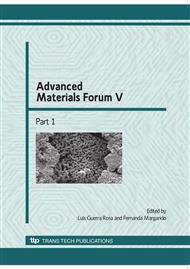p.404
p.411
p.418
p.423
p.430
p.437
p.444
p.450
p.459
Electrical Method to Study the Weak Molecular Movements at Nanometric Scale in Low Mobility Materials
Abstract:
For the characterization of the new materials and for a better understanding of the connection between structure and properties it is necessary to use more and more sensible methods to study molecular movement at nanometric scale. This paper presents the experimental basis for a new electrical method to study the fine molecular movements at nanometric scale in dielectric materials. The method will be applied for polar and non-polar materials characterization. Traditionally, the electrical methods used to study the molecular movements are based on the movements of the dipoles that are parts of the molecules. We have proposed recently a combined protocol to analyze charge injection/extraction, transport, trapping and detrapping in low mobility materials. The experimental results demonstrate that the method can be used to obtain a complex thermogram which contains information about all molecular movements, even at nanoscopic level. Actually during the charging process we are decorating the structure with space charge and during the subsequent heating we are observing an apparent peak and the genuine peaks that are related to charge de-trapping determined by the molecular movement. The method is very sensitive, very selective and allows to determinate the parameters for local and collective molecular movements, including the temperature dependence of the activation energy and the relaxation time.
Info:
Periodical:
Pages:
430-436
Citation:
Online since:
January 2010
Authors:
Price:
Сopyright:
© 2010 Trans Tech Publications Ltd. All Rights Reserved
Share:
Citation:


